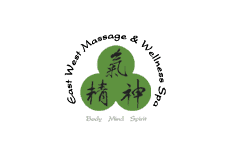Good Health Comes From The Tri-Unity of The Mind, Body & Spirit.
Dr. Xipin Zhou, M.D.O.M. L.Ac
History of Massage
The history of therapeutic massage in Western civilization goes back to the roots of Western medicine in ancient Greece. Today we usually think of Western medicine as not being holistic in its philosophy and approach, but it was not always that way.
In the 5th century B.C.E. in Greece, Hippocrates, the father of Western medicine, said, “A physician must be experienced in many things but assuredly also in rubbing.” He said that massage — along with fresh air, good food, baths, music, rest, and visits to friends — is key to treating disease.
Aesculapius also promoted massage, in conjunction with herbs, diet, relaxation, and hydrotherapy. Aesculapius was another 5th century B.C.E. healer in Greece who was pivotal in the development of Western medicine.
You might not recognize his name, but you’re bound to be familiar with the symbol of Aesculapius: two serpents coiled around a staff, the symbol of modern Western medicine. If you’ve seen a picture of the body’s seven chakras connected by a spiral or a double spiral, you’ve seen the diagram that prefigured the staff of modern Western medicine.
Sweden’s Henrik Ling (1776-1839) is considered the father of modern Western massage. Ling said, “We ought not to consider the organs of the body as the lifeless forms of a mechanical mass, but as the living, active instruments of the soul.” He was speaking during the heyday of the Industrial Revolution, however, so he was going directly against the mainstream by saying so. At this time, humans were discovering the incredible power and versatility of engine-driven machines, like the locomotive train and manudacturing equipment.
Seeing the human body as a marvelously complex machine, fueled by food instead of coal, seemed like a great advance at the time. But such thinking only widened the gap perceived between mind and body, not to mention spirit, that had begun to develop in Western thinking shortly after the days of Hippocrates and Aesculapius.
His system, known as Swedish Massage, spread from Sweden over the course of the 19th century into the European continent and America.
Ling based his regimen on what he learned about the ancient healing modalities of China, Rome, Greece, and Egypt.
In China, the history of massage is as old as the written history of China itself. The earliest writing found in China, which dates from 1400 B.C.E., discusses massage, acupuncture, and moxa (the burning of herbs for therapeutic purposes).
Traditional Chinese Medicine, a holistic system of healing modalities including dietary therapy, acupuncture, herbal medicine, and exercise, has always included massage, which since 800 C.E. has been known as “TuiNa” (literally, “push and grasp”).
Today TuiNa is increasingly popular in the West, as people turn to massage for serious therapeutic work, as well as for pleasure. As natural healing and holistic approaches caught on over the latter half of the twentieth century, more and more people realized how much could be accomplished with the healing touch.
